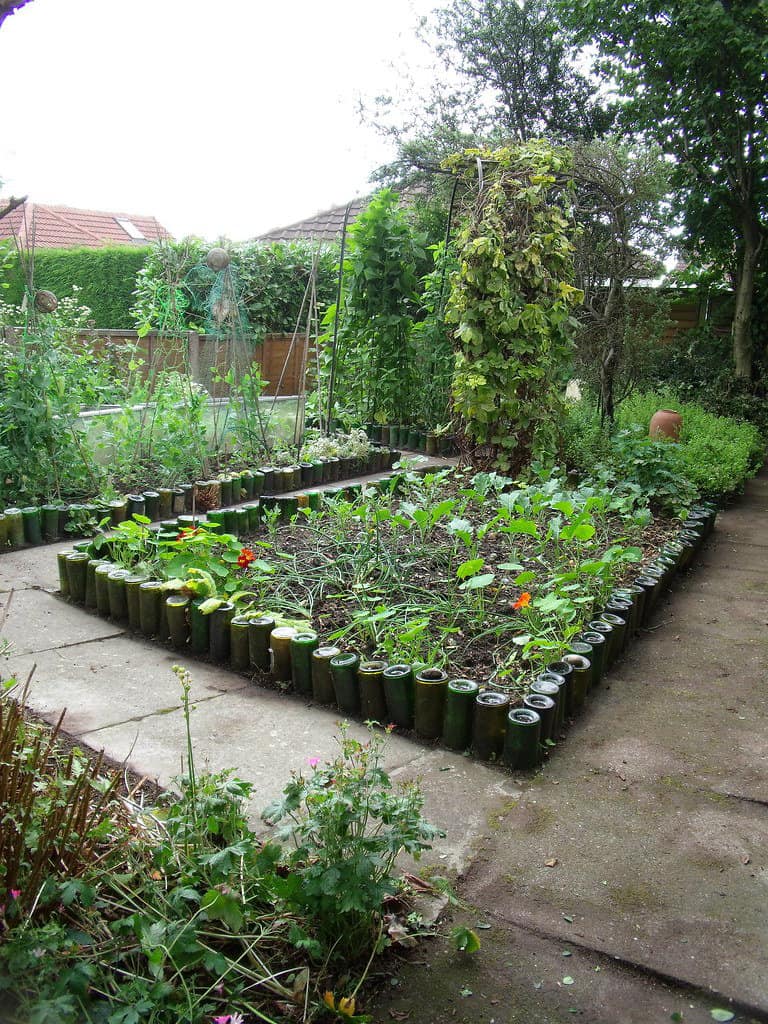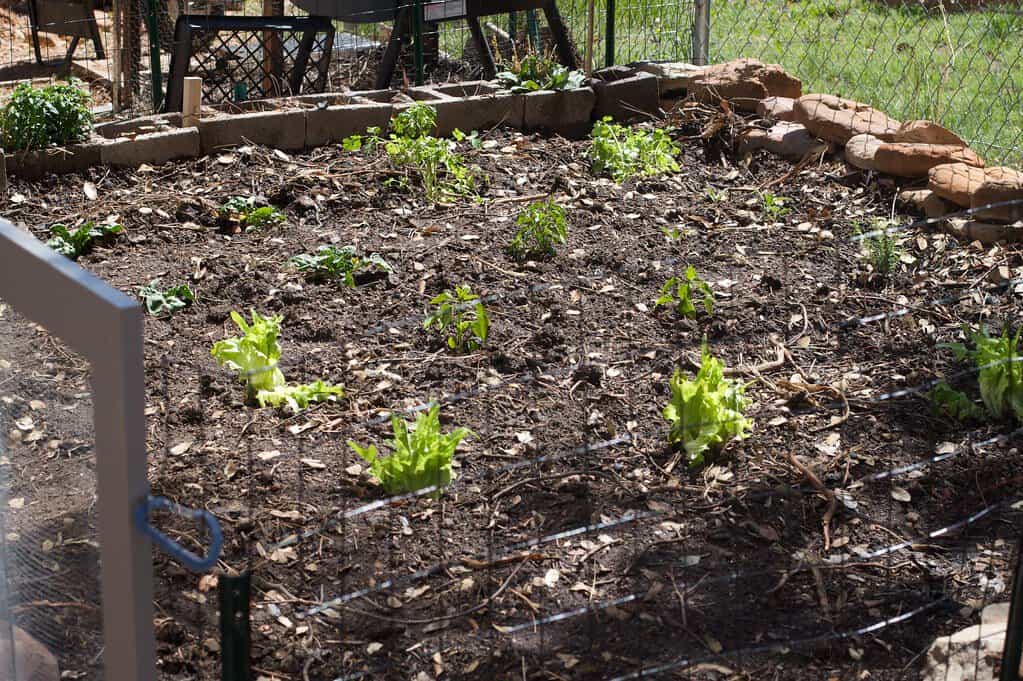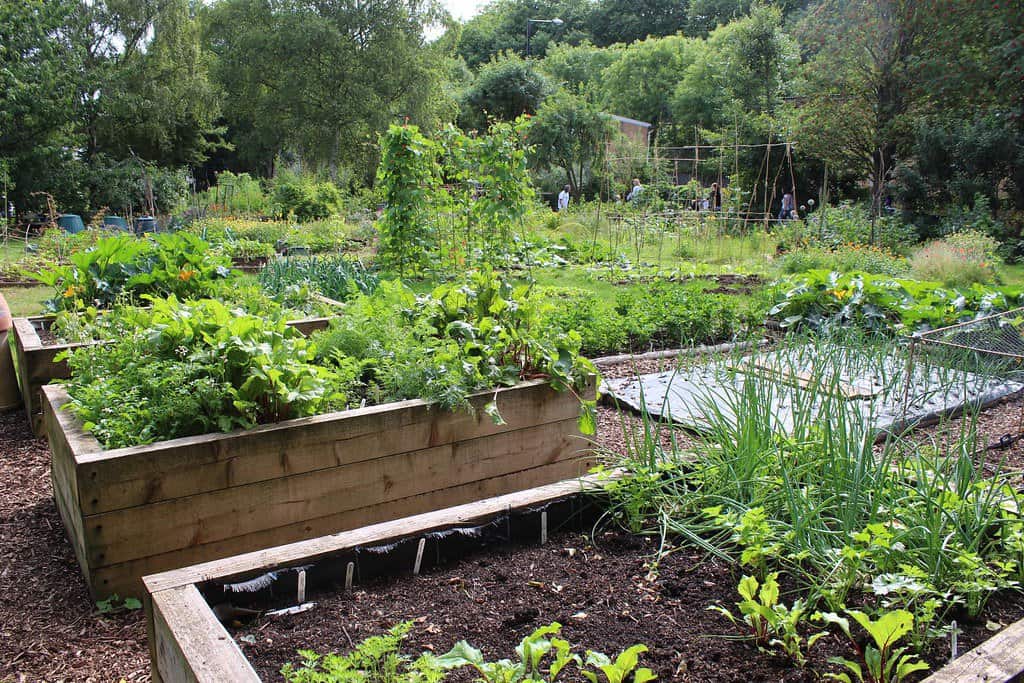Jump to:
Growing your own vegetables offers both satisfaction and enjoyment. This practice also comes with a myriad of benefits, including:
- enhanced health
- substantial savings on grocery expenses
- opportunity for outdoor/garden workout
Regardless of your gardening experience, initiating a vegetable patch is feasible year-round. Our guide serves as an invaluable resource, covering the basics for growing your own food. Read on to begin this journey and reap the abundant rewards it brings to your health and lifestyle!
Why Should You Set Up Your Own

- It’s easy and cheap to do! All you have to do is set aside a plot of land in the backyard and get your hands on the necessary gardening tools.
- Seeds are inexpensive, and finding a little spare time shouldn’t be too costly. Even some additional water and nutrients shouldn’t break the bank. In the long run, your shopping trips will become cheaper as you can cross off everything grown on your veg patch.
- It’s great for the environment! A sustainable garden offers a lifestyle which wastes little resources. Even better, it minimises negative impact on the environment.
- Encouraging all the family to cook fresh dishes from scratch more often is essential. Especially when you have a ready supply of fresh vegetables at the bottom of your garden. Get your five-a-day in more regularly. Consuming more vegetables equals meals with low calories and higher nutrition.
- You’ll know exactly where your ingredients have come from. Homegrown vegetables mean no artificial additives, preservatives or pesticides. This cultivating practice encourages reductions in food waste and inefficiency. You can trace their source and be sure of their organic and vegan credentials. Picking your own greens also guarantees freshness you may not be able to get elsewhere.
- One of the struggles of families is to snatch their children’s attention away from their screens. Having your own vegetable garden could be an introduction to natural entertainment. In this way, they’ll find ways to reconnect with nature. This can also provide adults with a new fascinating outdoor hobby to pursue.
How to Start a New Vegetable Patch

1. Find the right space
Starting this journey involves strategic planning and utilising available space wisely. Whether you have limited patio space or a sizable garden plot, efficient use of the area is key. Consider raised beds, particularly for beginners. Such options provide a manageable and organised structure for your vegetable patch.
Selecting the right space significantly influences your growing outcomes. Avoid planting under trees or in dense shade, as most crops thrive in sunlight. However, some vegetables thrive in dappled shade. This showcases the importance of understanding the unique needs of each plant.
To optimise your growing results, opt for a level area shielded from harsh winds and weather. This step sets the stage for a thriving vegetable patch. It ensures plants receive the sunlight and protection they need for a bounty harvest.
2. Design your plot
A thoughtful design also makes the cornerstone of a thriving vegetable patch. Start by sketching out a comprehensive plan. Arrange plant beds in groups of four for efficient crop rotation and pest management. This approach minimises the risk of pests and diseases accumulating in one area.
Consider transitioning from traditional row planting to 3 or 4-ft-wide raised beds. Especially do so if you already have an existing vegetable patch. While single rows work well on large farms with machinery, they might not be good for smaller gardens.
Using wider beds minimises the need for many paths between rows. In turn, it maximises the space for growing crops. This design change makes maintenance easier and boosts the productivity of your plot.
3. Clearing the ground and dealing with weeds
For this step, it requires thorough ground clearance and weed management. Begin by clearing grass and meticulously digging over the soil. Make sure the removal of roots from invasive perennial weeds like Japanese knotweed. If opting for non-organic methods, consider using chemicals for more effective weed control.
When starting, focus on a small area instead of tackling the entire garden at once. Utilise black mulch to cover unused sections and maintain weed control.
4. Get the soil
Achieving optimal soil conditions is crucial for a thriving vegetable patch. This is especially the case if your garden sits on chalk or heavy clay. Raised beds offer a solution, providing better drainage and aeration. Fill with soil-based compost, council green waste, and topsoil for robust plant growth.
Conducting a pH test with a kit from the garden store is essential when growing directly in the soil. Neutral soil is ideal for crop cultivation. If your soil is acidic, add lime to balance it, while alkaline soil benefits from dried poultry manure. Doing so ensures a neutral pH, promoting a nutrient-rich environment. Investing time in soil preparation lays a foundation for a productive vegetable patch.
5. Trellising to maximise space
Optimise your garden space by incorporating trellises, e.g., a planter box with trellis. These additions are highly effective techniques, especially in smaller plots. Vertical supports offer a smart solution for maximising space utilisation. Even in larger gardens, providing physical support for certain crops is beneficial. Commonly trellised vegetables include cucumbers, tomatoes, peas, and pole beans.
Use existing fences as trellises or construct your supports using wood or metal. Install the trellis before planting, ensuring it’s ready when the plants need support. This approach not only saves space but also contributes to healthier plant growth. What’s more, it increases sunlight exposure and easier maintenance.
6. Practise continuous harvest

Implement a continuous harvest strategy for year-round abundance! Instead of planting all at once, stagger your plantings throughout the growing season. Begin with cold-hardy greens and peas in late winter. Then, progress to sun-loving plants like tomatoes and peppers as the weather warms.
As you harvest, clear beds promptly to make space for new crops. Interplant fast-growing veggies like radishes with those that need a longer season, such as carrots. Successive planting extends the harvest season for each crop. It also provides a consistent and manageable supply of fresh produce. This maximises productivity and ensures a steady stream of homegrown vegetables.
Round-up
Growing your vegetable patch is a rewarding journey. Follow steps like planning, soil prep, trellising, and continuous harvesting. Be it a small or big plot, enjoy the satisfaction of homegrown produce and a well-tended garden.
Enhance your gardening experience with our available greenhouses for sale. Alternatively, explore our potting sheds for additional storage solutions. Visit Garden Buildings Direct for a wider selection!
Up next on your reading list: How to Start a Garden Greenhouse










